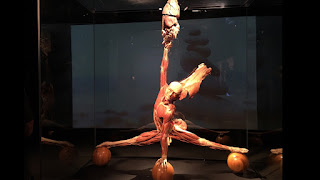Week 2: Art and Math
Blog Post #2: Art and Math
 |
| Similar to my elementary art project. |
This weeks topic covers the relationship between art and mathematics. The first interaction I personally experienced between the two was when, in elementary school, we learned a drawing and painting technique for creating realistic perspective. We had to choose a point on the horizon and then draw a series of diagonal lines expanding outwards from that point. Then, we drew street scenes in which the tops and bottoms of the buildings aligned with the line segments emanating from the centroid. We weren’t taught the mathematical basis and, to be honest, I didn’t even realize we were using math to make art at the time.
 |
| My favorite classical use of perspective: Pietro Perugino's Sistine Chapel |
The goal of my art project was to create a 2D image that looked 3D. Before this week’s lesson I had always taken our collective ability to do so for granted. However, it wasn’t until Giotto in the thirteenth century that the West began to produce 3D-looking paintings through the use of perspective (which originally came from the East). As the skill advanced, math was increasingly used to shift between artificial and natural perspective.
Something that really intrigued me this week was the recurrence of mathematics in nature. Spirals are present in the growth of trees, the values of the stock market, hurricanes, and the shapes of galaxies. Prior to this course I had noticed that many microscopic biological phenomena looked similar to occurrences found in astronomy, but I hadn’t realized that there is mathematical basis that directly applies to these cases. The connection is in Fibonacci numbers. Nature is all about efficiency, and using these numbers to regulate growth is efficient. They frequently show up in nature. The mechanism is for how growth is regulated by these numbers remains unknown, but as a direct result of this class I will definitely be paying attention to research in this field. I will also definitely be more cognizant in noticing fractal and spiral patterns in the world around me.
 |
| Fibonacci Numbers spiral. |
Works Cited
Author Unknown. "Program for Fibonacci Numbers." GeeksforGeeks, 31 Mar 2018. Web. <www.geeksforgeeks.org.program-for-nth-fibonacci-number/>.
Mezzino, Alvaro. "The Giving of the Keys to Saint Peter, Pietro Perugino, 1482." Silver and Exact, 29 Oct 2010. Web. <www.silverandexact.com/2010/10/29/te-giving-of-the-keys-to-saint-peter-pietro-perugino-1482/>.
Pattinati, Rochelle. "One Point Perspective." Tes Teach with Blendspace. Web. <www.tes.com.lessons/oGZo9vjLia-vlw/ine-point-perspective>.
Socioeconomics Institute. "Fibonacci, Fractals and Financial Markets" YouTube, 31 May 2007. Web. <www.youtube.com/watch?v+RE2Lu65XxTU>.
Vesna, Victoria. "Mathematics." Lecture. DESMA 9. Web. <https://cole.uconline.edu/~UCLA-201209-12F-DESMA-9-1#I=Week-2-Assignment/id4287887>.



It's interesting to read about some of the history of math in art. We take it for granted because we learned it at a young age, but the technique was first discovered relatively recently (in the grand scheme of things). It's also interesting that nature is so organized and mathematical, it's so easy to simply see nature as being chaotic and random.
ReplyDelete